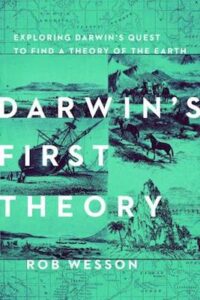 When the intellectual legacy of Charles Darwin is discussed, more often than not, the focus is on his Origin; however as anyone who has spent even a little time examining the life of this great Nineteenth Century polymath quickly comes to learn, his curiosity led him to inquire into a vast number of mysteries over the course of his life – and early among these was geology.
When the intellectual legacy of Charles Darwin is discussed, more often than not, the focus is on his Origin; however as anyone who has spent even a little time examining the life of this great Nineteenth Century polymath quickly comes to learn, his curiosity led him to inquire into a vast number of mysteries over the course of his life – and early among these was geology.
One of the books Darwin read – and likely re-read – during the five year voyage of the H.M.S. Beagle was Sir Charles Lyell’s then recently published Principles of Geology (presented to him as a gift by Captain FitzRoy, no less). To say that the book influenced him greatly would be an understatement. Therefore, not surprisingly, one of earliest theories from his studies during the journey was not biological but geological: uplift and subsidence.
It is Darwin’s ideas in this area that Dr. Rob Wesson, Scientist Emeritus at the USGS, takes as his subject in his book Darwin’s First Theory; Exploring Darwin’s Quest for a Theory of Earth. Not content simply to trace Darwin’s ideas on paper, Dr. Wesson set out to re-trace his actual travels in order to more brightly illuminate Darwin’s geological theories and the framework he created to deduce them that would serve him so well in his later work on the subject of evolution.
If you enjoyed reading this, please consider signing up for The Well-read Naturalist's newsletter. You'll receive a helpful list of recently published reviews, short essays, and notes about books in your e-mail inbox once each fortnight.
